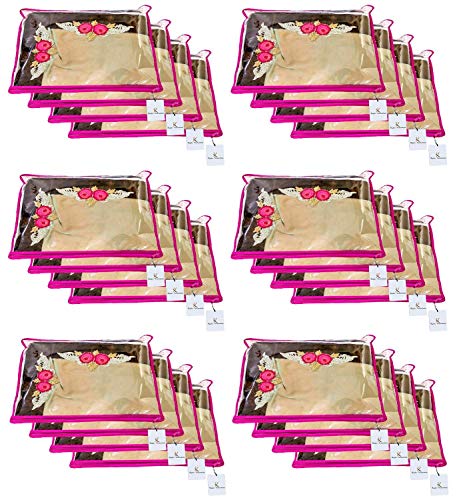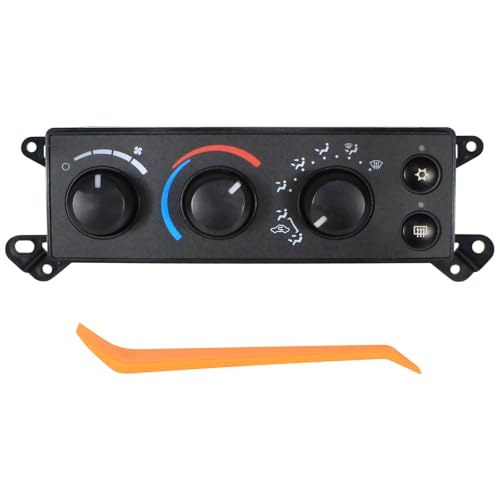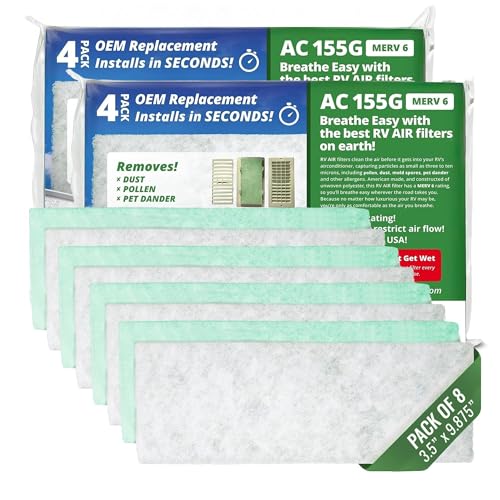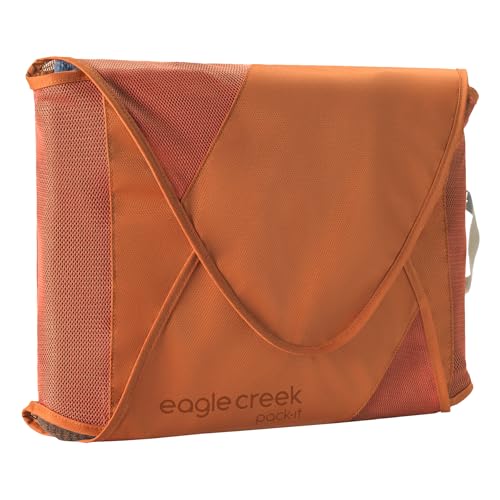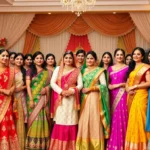Wedding season brings excitement and the inevitable challenge of packing our most precious sarees without damaging their delicate fabrics and intricate details. We’ve all been there – staring at our gorgeous collection wondering how to fit everything into our luggage while keeping those expensive silk sarees wrinkle-free and ready to wear.
Smart saree packing isn’t just about folding techniques; it’s about preserving the beauty and elegance that makes these garments so special for weddings. Whether we’re traveling as guests or preparing for our own big day, proper packing methods can save us from last-minute ironing disasters and fabric damage.
We’ll share proven strategies that professional stylists and experienced travelers swear by, from choosing the right materials to master folding techniques that keep your sarees looking pristine. These methods work for everything from heavy Banarasi silks to delicate chiffons, ensuring you arrive at every wedding celebration looking absolutely stunning.
Traditional Folding Methods for Wedding Sarees
Professional stylists swear by time-tested folding techniques that preserve the elegance of wedding sarees during transport. These methods have protected precious silks and delicate fabrics for generations.
The Classic Fold Technique
Start by laying your saree on a clean, flat surface with the pallu spread evenly. We recommend using a large bed or clean floor space to accommodate the entire length. Fold the saree lengthwise into three equal sections, ensuring the decorative border remains visible on top.
Bring the pleated end toward the pallu, creating accordion-style folds every 12 inches. This technique works exceptionally well for heavy Kanjeevaram sarees and Banarasi silks. Each fold should align perfectly with the previous one to prevent uneven creases.
Place the folded saree in a breathable cotton bag or wrap it in a muslin cloth. We’ve found this prevents moisture buildup that can damage gold thread work and sequin embellishments. Store the wrapped saree flat in your suitcase’s bottom compartment for maximum protection.
Rolling Method for Delicate Fabrics
Begin with chiffon, georgette, or crepe sarees by smoothing out all wrinkles completely. These lightweight fabrics respond better to rolling than traditional folding methods. Lay the saree horizontally with the blouse piece placed at one end.
Roll the entire saree around a cardboard tube or pool noodle covered in tissue paper. We use tubes that are at least 24 inches long to accommodate the saree’s width. This method eliminates sharp creases that can permanently damage delicate weaves.
Secure the rolled saree with soft ribbon ties at three points along its length. Avoid rubber bands or tight elastic that can leave permanent marks on fine fabrics. Place the rolled saree in a garment tube or large cylindrical container for transport.
Tissue Paper Layering Approach
Layer acid-free tissue paper between each fold of heavily embellished wedding sarees. We recommend using at least 3-4 sheets between sections to prevent beads, sequins, and zardozi work from catching on each other. This method works perfectly for lehengas and designer sarees with extensive handwork.
Create buffer zones around particularly delicate areas like the pallu and border. Extra tissue paper cushioning protects mirror work, stone embellishments, and intricate embroidery from shifting during travel. We stuff additional tissue into any hollow spaces within the folded saree.
Wrap the entire tissue-layered bundle in a soft cotton sheet before placing it in your luggage. This final layer provides moisture protection and prevents the tissue paper from tearing during handling. Store these precious sarees in hard-shell suitcases to avoid compression damage from other luggage.
Essential Packing Supplies for Saree Protection

Protecting your precious wedding sarees requires the right materials and supplies. We’ve compiled a list of professional-grade packing essentials that preserve fabric integrity and prevent damage during storage and transport.
Acid-Free Tissue Paper and Muslin Cloth
Acid-free tissue paper serves as your first line of defense against color bleeding and fabric deterioration. This pH neutral material prevents dye transfer between saree layers and maintains the original vibrancy of your garments over time. We recommend placing sheets between each fold to create protective barriers that prevent direct fabric contact.
Muslin cloth provides an additional protective layer for delicate fabrics like silk and chiffon. This breathable cotton material acts as a dust barrier while allowing air circulation around your sarees. Wrapping each saree individually in muslin creates a gentle cocoon that prevents minor abrasions and snags during handling.
Moisture-Absorbing Silica Gel Packets
Silica gel packets maintain optimal humidity levels inside your storage containers or suitcases. These moisture absorbers prevent condensation buildup that can lead to mold growth and fabric staining. Place 2-3 packets in each storage box or suitcase compartment to create a dry environment that preserves fabric quality.
Activation process involves checking that your silica gel packets are fresh and properly sealed. Replace packets every 6 months or when they feel soft to the touch. Strategic placement near corners and edges of storage containers ensures maximum moisture protection for your entire saree collection.
Cedar Blocks for Natural Pest Prevention
Cedar blocks offer natural insect repellent properties without harsh chemicals that could damage delicate fabrics. These aromatic wood pieces deter moths, silverfish, and other fabric-eating pests that commonly target natural fibers. We recommend placing 4-6 small cedar blocks throughout your storage area for comprehensive protection.
Refreshing cedar blocks maintains their effectiveness over time by lightly sanding the surface every few months. This process releases fresh cedar oils that continue protecting your sarees from unwanted pests. Store blocks in breathable mesh bags to prevent direct contact with your garments while maintaining their protective benefits.
Organizing Sarees by Fabric Type and Occasion

Strategic organization by fabric type and occasion ensures we’ll have the right saree accessible at the perfect moment. This systematic approach saves precious time during busy wedding schedules while protecting our investment in these beautiful garments.
Silk Sarees for Main Wedding Ceremonies
Silk sarees deserve top priority placement in our wedding wardrobe organization due to their luxurious feel and ceremonial significance. We recommend storing Kanjeevaram, Banarasi, and other heavy silk varieties in the most accessible section of our luggage since these pieces anchor the main wedding events.
Premium silk fabrics require individual breathable cotton bags to maintain their natural luster and prevent moisture damage. Each silk saree should be folded using the accordion method we discussed earlier, with acid-free tissue paper layered between heavy gold work areas.
Temperature control becomes critical for silk storage, so we suggest packing these treasures in hard-shell cases that provide consistent protection. Wedding planners often advise keeping silk sarees in climate-controlled environments until the ceremony day to preserve their pristine appearance.
Cotton and Linen Sarees for Pre-Wedding Events
Cotton and linen sarees offer versatility and comfort that makes them perfect companions for mehendi ceremonies, sangeet rehearsals, and casual wedding gatherings. These breathable fabrics handle frequent wear better than delicate alternatives, making them our go-to choices for multi-day celebrations.
Organizing cotton sarees requires less intensive protection since these natural fibers resist wrinkles more effectively than silk varieties. We can safely stack 2-3 cotton sarees together in muslin wrapping without fear of permanent creasing or fabric damage.
Pre-wedding events often involve active participation, dancing, and outdoor activities where cotton’s durability shines brightest. Smart packing means placing these versatile pieces in easily accessible compartments for quick outfit changes between events.
Heavy Embellished Sarees for Reception Functions
Heavy embellished sarees command special attention in our organizational system since their intricate beadwork and sequins create unique storage challenges. Reception functions showcase these glamorous pieces, so we need them wrinkle-free and sparkling when the spotlight hits.
Embellishment protection requires individual compartments or specially padded boxes that prevent beads from catching on neighboring fabrics. We suggest wrapping each heavily decorated saree in multiple layers of acid-free tissue paper before placing them in rigid containers.
Reception venues often feature photography sessions and social media moments where every detail matters, making proper storage essential for picture-perfect results. Professional stylists recommend unpacking embellished sarees 24 hours before the event to allow any minor wrinkles to naturally release in hanging position.
Storage Solutions for Different Saree Quantities

Wedding saree storage needs vary dramatically based on your collection size and exact requirements. We’ll explore customized answers that protect your investment while ensuring easy access when you need them most.
Individual Saree Boxes for Heirloom Pieces
Individual saree boxes provide the ultimate protection for precious or heirloom wedding sarees that require specialized care. We recommend wooden boxes with hinged lids for easy access to your most treasured pieces. These dedicated storage answers prevent fabric damage by eliminating contact with other garments.
Creating the perfect environment inside each box involves lining them with acid-free paper to prevent color bleeding and fabric deterioration over time. Adding cedar blocks naturally deters fabric-eating insects without introducing harmful chemicals that could damage delicate materials. This combination ensures your grandmother’s wedding saree or your own bridal outfit remains pristine for future generations.
Multi-Compartment Wardrobes for Large Collections
Multi-compartment wardrobes offer organized storage answers for extensive wedding saree collections that include various fabrics and styles. We suggest wardrobes with both hanging sections for lighter fabrics like chiffon and georgette, plus dedicated drawers or shelves for folded heavier silks. This dual approach maximizes space while providing appropriate storage for each fabric type.
Organizing large collections becomes manageable when each compartment serves a exact purpose. Hanging sections work best for sarees you’ll access frequently during wedding season, while drawer compartments protect special occasion pieces from dust and light exposure. Labels on each section help you locate exact sarees quickly during busy wedding preparations.
Portable Garment Bags for Travel
Portable garment bags solve the challenge of transporting multiple wedding sarees safely to various celebration venues. We prefer lightweight, transparent bags with zipper closures that allow quick identification of contents without opening each bag. These practical answers accommodate not just sarees but also lehengas and suits for comprehensive wedding outfit organization.
Travel friendly features make these bags essential for destination weddings or multi-day celebrations. Carrying handles and compact folding capabilities ensure easy transport, while breathable materials prevent moisture buildup during extended travel periods. Choosing bags made from durable materials protects your wedding wardrobe investment throughout the celebration season.
Climate Control and Environment Considerations

Protecting wedding sarees extends beyond proper folding and storage containers to creating optimal environmental conditions. We’ll explore how managing humidity, temperature, and ventilation preserves your precious sarees for years to come.
Humidity Management in Storage Areas
Breathable storage materials form the foundation of effective humidity control for wedding sarees. We recommend using cotton or muslin bags that allow natural airflow while preventing moisture buildup and musty odors. Cotton bags work exceptionally well for heavy silk sarees like Kanjeevaram and Banarasi, while muslin provides gentle protection for delicate chiffons and georgettes.
Plastic covers trap moisture and create the perfect environment for mold growth, so we avoid them completely when storing wedding sarees. Instead, we choose natural fiber storage answers that let fabrics breathe naturally. Cedar balls or lavender sachets add an extra layer of protection by maintaining freshness while deterring insects that could damage delicate embellishments.
Acid-free tissue paper helps control humidity at the fabric level by absorbing excess moisture around fold lines. We layer this specialized paper between saree folds to prevent color bleeding and fabric deterioration that occurs when humidity levels fluctuate dramatically.
Temperature Regulation for Fabric Preservation
Cool, dry environments provide optimal conditions for preserving wedding saree fabrics and preventing color fading. We store our sarees away from direct sunlight and maintain consistent temperatures to prevent the expansion and contraction that weakens silk fibers over time.
Extreme temperature fluctuations damage even the sturdiest wedding saree fabrics, so we choose storage locations with natural temperature stability. Upstairs bedrooms typically offer better climate control than basements or attics, which experience more dramatic temperature swings throughout the seasons.
Climate-controlled storage areas become essential for valuable heirloom sarees that we plan to pass down through generations. We invest in storage spaces that maintain temperatures between 65-70°F year round, creating stable conditions that preserve both fabric integrity and embellishment quality.
Ventilation Requirements for Long-Term Storage
Air circulation prevents moisture accumulation that leads to mold growth and fabric deterioration in stored wedding sarees. We ensure storage areas have adequate ventilation by choosing locations with natural airflow rather than enclosed spaces like sealed closets or basement storage rooms.
Breathable storage answers work hand in hand with room ventilation to create optimal air movement around each saree. We use storage boxes with small ventilation holes or leave container lids slightly ajar to promote gentle air circulation while protecting sarees from dust and light exposure.
Basement storage areas typically lack proper ventilation and retain moisture, making them unsuitable for wedding saree storage. We select storage locations in main living areas or well-ventilated closets that naturally maintain better air quality and circulation patterns throughout the year.
Labeling and Inventory Systems for Easy Access

Creating a detailed inventory list of all sarees helps us manage wedding collections efficiently. We recommend noting each saree’s fabric, color, and suitable occasions to streamline our packing process.
Color-Coded Tags for Quick Identification
Assigning color-coded tags to sarees transforms our organizational system into a visual roadmap. We can designate exact colors for different occasions like red tags for wedding ceremonies, blue tags for pre-wedding events, and gold tags for reception functions. These visual cues eliminate guesswork when we’re searching through multiple sarees during busy wedding preparations.
Season-based color coding adds another layer of organization to our system. Bright colored tags work well for summer wedding sarees while darker hues represent monsoon or winter appropriate fabrics. This dual tagging approach ensures we’re selecting weather-appropriate options without having to examine each saree individually.
Tag placement matters significantly for quick visual scanning. We suggest attaching tags to the top corner of storage bags or containers where they’re immediately visible. Clear protective covers over tags prevent color fading and maintain the system’s effectiveness over time.
Digital Cataloging with Photos
Taking high-quality photos of each saree from multiple angles creates a comprehensive visual database. We recommend capturing front views, back views, and close-up shots of intricate details like embroidery or border work. These images help us make informed decisions without physically handling delicate fabrics repeatedly.
Creating a digital album with detailed notes maximizes our cataloging efficiency. We can include information about fabric type, occasion suitability, matching accessories, and special care instructions for each saree. This digital approach allows us to browse and select options from anywhere without accessing physical storage.
Organizing photos by event categories streamlines our selection process during wedding planning. We suggest creating separate folders for ceremony sarees, reception wear, and pre-wedding event options. Adding metadata like purchase date and cost helps us track our collection’s value and rotation patterns.
Occasion-Based Filing Systems
Organizing sarees by exact occasions prevents last-minute confusion during wedding events. We recommend creating separate storage sections for wedding ceremonies, engagement functions, and casual family gatherings. This systematic approach ensures we can locate appropriate attire quickly when time is limited.
Formal event sarees require dedicated storage space with enhanced protection measures. We suggest using individual breathable storage bags for heavily embellished pieces and ceremonial silks. These premium sarees deserve separate compartments to prevent damage from contact with other garments.
Casual gathering sarees can share storage space while maintaining organizational clarity. We can group cotton sarees, everyday silks, and versatile pieces in labeled containers or drawers. This approach maximizes storage efficiency while keeping these frequently accessed items easily retrievable.
Season-exact filing adds practical value to our organizational system. We recommend storing summer wedding sarees separately from monsoon appropriate options to match seasonal wedding requirements. This temporal organization helps us select climate-suitable fabrics without sorting through entire collections.
Travel Packing Strategies for Wedding Sarees

Traveling with wedding sarees requires strategic planning to ensure these precious garments arrive in perfect condition. We’ll explore proven methods that protect your sarees whether you’re attending a destination wedding or transporting your own bridal collection.
Carry-On vs Checked Luggage Guidelines
Carrying valuable or delicate wedding sarees in your carry-on luggage provides direct supervision and reduces risk of damage. We recommend this approach for heirloom pieces like Kanjeevaram silks or heavily embellished lehengas worth over $500. Your most precious sarees stay within reach throughout the journey.
Checked luggage works well for less fragile cotton sarees and everyday wedding guest outfits when properly packed. Place these sarees in hard-shell suitcases with adequate padding to prevent crushing during baggage handling. Label your luggage clearly and use TSA-approved locks for security.
Garment bags offer excellent protection in both carry-on and checked scenarios. We suggest using breathable fabric garment bags rather than plastic ones to prevent moisture buildup during long flights. Pack one premium saree per garment bag to avoid fabric friction.
Wrinkle Prevention Techniques for Transport
Rolling your wedding sarees prevents sharp creases while maximizing suitcase space. Lay the saree flat, fold it lengthwise once, then roll it gently from the pallu end. Secure each rolled saree in a ziplock bag or garment sleeve for extra protection.
Tissue paper layering creates a barrier between sarees and reduces friction damage. Place acid-free tissue paper between each fold and between different sarees when stacking them. This method works particularly well for delicate fabrics like chiffon and georgette.
Soft wrapping with cotton or muslin cloth adds another protective layer. Wrap each saree individually in clean, soft cotton fabric before placing it in your luggage. This technique prevents dirt accumulation and reduces fabric-to-fabric friction during transport.
Flat placement works best for your most delicate silk sarees and heavily embellished pieces. Reserve the flattest section of your suitcase for these special garments. Avoid placing heavy items on top of these sarees to prevent permanent creasing.
Emergency Unpacking and Pressing Tips
Hanging your sarees immediately upon arrival allows natural gravity to release minor wrinkles. Unpack wedding sarees first and hang them in the bathroom while you shower. Steam from hot water helps relax fabric fibers naturally.
Steaming removes stubborn wrinkles when traditional ironing isn’t available. Use a handheld steamer on the reverse side of embellished sarees to avoid damaging decorative elements. Hold the steamer six inches away from delicate fabrics like silk.
Professional pressing services at hotels offer expert care for valuable wedding sarees. Many upscale hotels provide same-day pressing services specifically trained for delicate ethnic wear. Request this service 24 hours before your event for best results.
Bathroom steam treatment works as an emergency solution for minor wrinkles. Hang your saree in the bathroom and run hot water for 10-15 minutes. Keep the saree away from direct water contact while allowing steam to work on the fabric.
Conclusion
Wedding sarees deserve the same attention and care as the precious memories they’ll help create. By implementing these professional packing and storage techniques we’ve shared you’ll ensure your beautiful garments remain pristine throughout the entire celebration.
Remember that proper preparation makes all the difference. Whether you’re organizing your own wedding collection or packing for destination celebrations the right supplies and methods will protect your investment.
These strategies aren’t just about preventing wrinkles – they’re about preserving the elegance and beauty that make each saree special. With careful planning and the right approach your wedding sarees will look as stunning as the day you first wore them.
Frequently Asked Questions
What are the best folding techniques for heavy silk wedding sarees?
For heavy silk sarees like Kanjeevaram and Banarasi, use the Classic Fold Technique with precise accordion-style folds. This method distributes weight evenly and prevents sharp creases. Store folded sarees in breathable cotton bags to prevent moisture damage and maintain fabric integrity during transport.
How should I pack lightweight sarees like chiffon and georgette?
Use the Rolling Method for lightweight fabrics. Roll the saree around a cardboard tube to avoid sharp creases and maintain the fabric’s natural drape. This technique prevents delicate materials from getting damaged while keeping them wrinkle-free during travel.
What packing supplies are essential for protecting wedding sarees?
Essential supplies include acid-free tissue paper to prevent color bleeding, muslin cloth for dust protection, silica gel packets for moisture control, and cedar blocks for natural pest prevention. These materials work together to maintain optimal storage conditions and preserve fabric quality.
Should I carry wedding sarees in carry-on or checked luggage?
Carry valuable and delicate sarees in carry-on luggage for direct supervision and better protection. Reserve checked luggage for less fragile options. Use breathable fabric garment bags and layer with tissue paper regardless of your choice for maximum protection.
How do I organize sarees by fabric type and occasion?
Create separate categories: silk sarees for main ceremonies in individual cotton bags, cotton and linen sarees for pre-wedding events, and heavily embellished pieces for receptions in individual compartments. This system ensures quick access and prevents fabric mixing that could cause damage.
What are the best climate control practices for saree storage?
Store sarees in cool, dry environments away from direct sunlight. Use breathable materials like cotton and muslin bags instead of plastic covers. Maintain proper ventilation and consider using silica gel packets to control humidity levels and prevent mold growth.
How can I create an effective inventory system for my wedding sarees?
Develop a detailed inventory list noting fabric type, color, and suitable occasions. Use color-coded tags for quick identification and create digital catalogs with high-quality photos. Implement occasion-based filing systems to streamline selection during busy wedding schedules.
What should I do immediately after arriving at my destination with packed sarees?
Unpack sarees immediately and hang them to release any travel wrinkles. For heavily embellished pieces, unpack 24 hours before the event. Use steam for stubborn creases, but avoid direct contact with delicate fabrics and embellishments.





